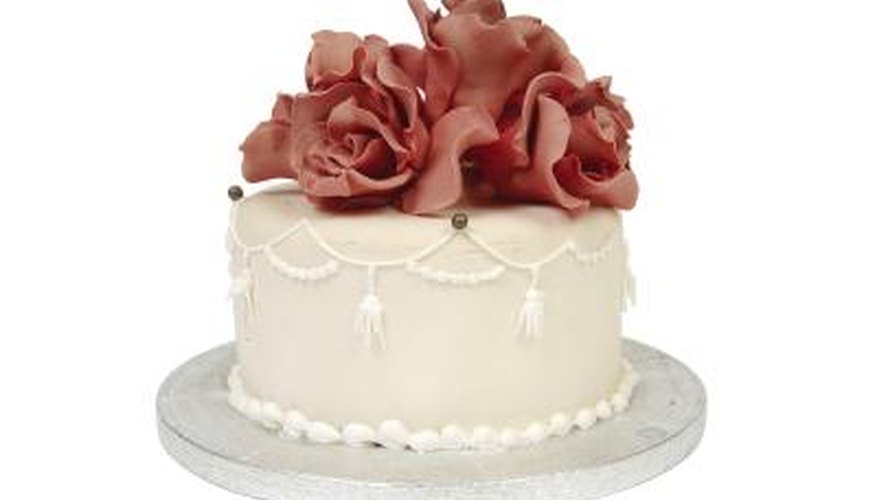Pastillage, commonly referred to as gum paste, can be used to create intricate or simple, edible decorations to top cakes, cupcakes, pastries and cookies. You can create several smaller pieces of the overall pastillage project and glue them together when you are ready to apply them. But you will need to know how to glue the pieces together while keeping the project safe for consumption.
Place the finished pastillage pieces on a sheet of waxed paper to let them dry. Turn them often so that they dry quickly and evenly. This process may take several days. The pieces are dry when they are hard and porcelain-like.
- Pastillage, commonly referred to as gum paste, can be used to create intricate or simple, edible decorations to top cakes, cupcakes, pastries and cookies.
- The pieces are dry when they are hard and porcelain-like.
Pour 2 to 3 teaspoons of royal icing onto a plate and add food colouring in the colour that was used for the pastillage pieces. Do so slowly, until the colour of the icing matches the colour of the pastillage.
Dip a new, thin acrylic paintbrush into the royal icing and brush it in a thin layer over the area of the first piece of pastillage, exactly where you want it to stick to another piece. For example, if you are affixing a flower to a stem, apply the icing to the very end of the stem, where it will press against the bottom of the flower.
- Pour 2 to 3 teaspoons of royal icing onto a plate and add food colouring in the colour that was used for the pastillage pieces.
- Dip a new, thin acrylic paintbrush into the royal icing and brush it in a thin layer over the area of the first piece of pastillage, exactly where you want it to stick to another piece.
Press the next piece of pastillage onto the icing over the first piece. Using the previous example of a flower and stem, this next piece would be the flower. Hold the pieces together for a few seconds to ensure a full bond.
Continue gluing the pieces together with the icing until your entire arrangement is finished.
